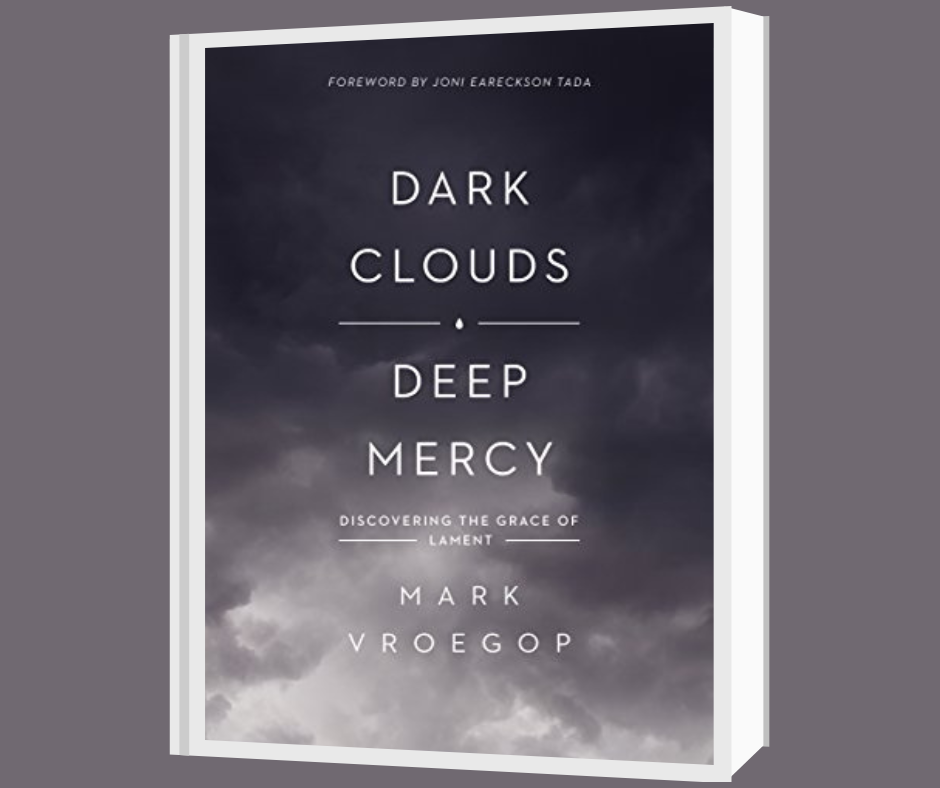Book Reviews
Dark Clouds, Deep Mercy: Discovering the Grace of Lament, by Mark Vroegop | Review by Rosa Byler

The stillbirth of their apparently normal daughter, followed by multiple miscarriages, initiated a “roller coaster of emotions and challenges” for Pastor Mark Vroegop and his wife. Typical Christian responses to their ongoing pain included uneasiness, subject changes, attempts to find the bright side, or awkward silence. Expressing his sadness and anger to God led to Vroegop’s discovery of biblical lament in the Psalms. As he began to preach on the subject and to use its principles with grieving people, he observed that not only funeral and worship services but also hymnbooks and contemporary Christian songs tend to be “lament-lite.” His growing conviction that lament is “a rich but untapped reservoir of God’s grace” (20) resulted in this book.
The first part of Dark Clouds analyzes the pattern of four typical lament psalms. Key elements include “an address to God, a complaint, a request, and an expression of trust and/or praise,” summarized as “turn, complain, ask, and trust” (29). Rather than turning away from God in silent unbelief or anger, the psalmists sought Him. They outlined the reasons for their sorrow and boldly asked Him to do something. The last several verses of nearly every lament psalm express trust in God’s goodness and praise for what He already has done and will do.
The second portion explores the book of Lamentations as a guide to learning from lament. What does God intend to teach us through sorrow? Death, for example, is a shocking reminder that we live in a broken world; attending a funeral brings life problems into perspective, and the sermon reorients us to the hope of the gospel. As Jeremiah reflected on the destruction of Jerusalem, he connected Israel’s suffering to their sin. (The title Dark Clouds, Deep Mercy comes from the seeming paradoxes of Lam. 2:1 and 3:22—the Lord in righteous anger covers Zion with a cloud yet remains a God whose mercy never fails.)
Lamentations 4 describes the destruction of Israel’s idols, none of them strangers to modern Gentiles: financial security; trusting in people, especially spiritual leaders; cultural acclimation rather than mourning for sin, and presuming divine favor based on ancestry. The rapid-fire recitation of Israel’s woes in Lamentations 5 brings no happy ending to the story but ends with a prayer for restoration to the only One who can help.
Part 3, “Living with Lament,” considers the benefits of individual lament; as the biblical language of loss, it confronts the silence of unbelief. Personal lament provides a category for complaints, an appropriate way to process pain and overcome bitterness, and a path to worship. However, Vroegop also encourages corporate lament. Funerals, surprisingly, often fail to honestly acknowledge the pain of loss and the spiritual significance of death. (“Celebrations of life” consisting mostly of stories and memories give little hope.) Congregational prayer, sermons and teaching, and singing or songwriting should acknowledge those for whom life is painful. Vroegop’s congregation has mourned and prayed together for “broken marriages, sexual sin, wayward children, joblessness, terminal illness, and any number of painful situations” (179), in addition to the cultural evils of abortion and the challenges of same-sex attraction and racial tension.
Vroegop concludes that “Christianity needs competent lamenters,” empowered by the gospel to be “conduits of grace” into the dark moments of people’s lives (194). The capacity to do this, as one might suspect, is developed by dark clouds that no one would voluntarily choose. Many readers will pick up the book searching for comfort in personal sorrow; Vroegop assures those who are not currently experiencing difficulty that they will. Saturated with Scripture and connected to pastoral experiences, Dark Clouds is an excellent read!